Spotter's Guide - Fungi
Fungi are truly fascinating and are always an exciting discovery on a woodland walk. A few can be spotted all year round but, particularly during autumn, you will see an array of different mushrooms and toadstools springing up across the Forest floor or clinging to trees. Here are our top 10 fungi to look out for.
Look out for common stinkhorn in mature broadleaf woodlands like Bannams Wood or Roberts Wood, all year round. This interestingly shaped fungus is once smelt never forgotten. The unforgettable smell - used to attract flies which spread the spores - is almost overshadowed by the unusual shape – no surprise that its Latin name is Phallus impudicus!
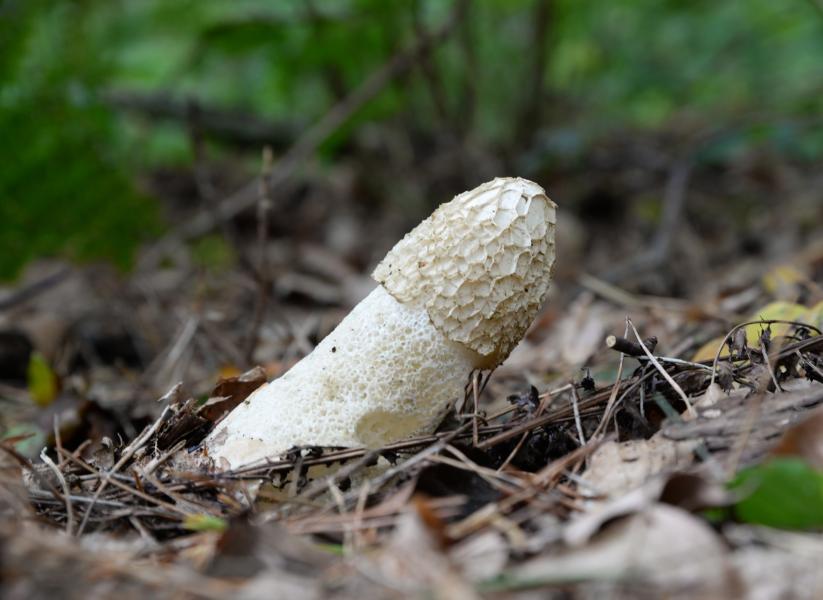
Not to be confused with dead moll's fingers, dead man's fingers can be spotted on most deadwood broadleaf trees - mainly sycamore - all year round. This fungus has certainly earnt its name! When young, it is pale grey with whitish tips, but when it has matured, it appears in clusters of hard, swollen, black fungi that looks a bit like decaying fingers reaching out of the ground towards the sky.
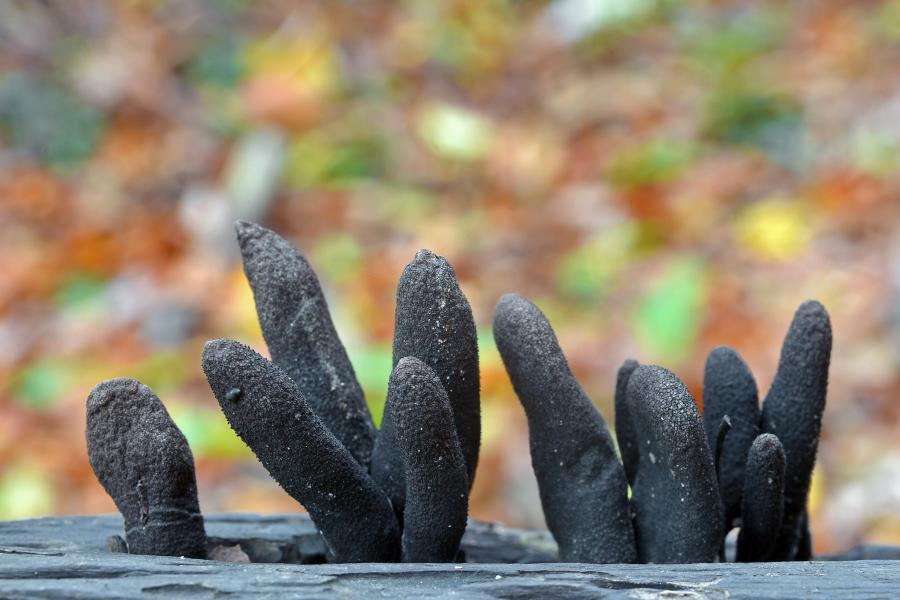
Jelly ear fungus – named so because of its jelly-like texture and appearance – mainly grow on dead elder trees and on fallen branches and appears across the damp, shady areas of the Forest during most wet spells. It is also known as Judas’s Ear in reference to the legend that Judas hanged himself on an elder tree out of shame after betraying Jesus, and that the fungal ‘ears’ that emerge from elder woods are visible residues of Judas’ tormented spirit.
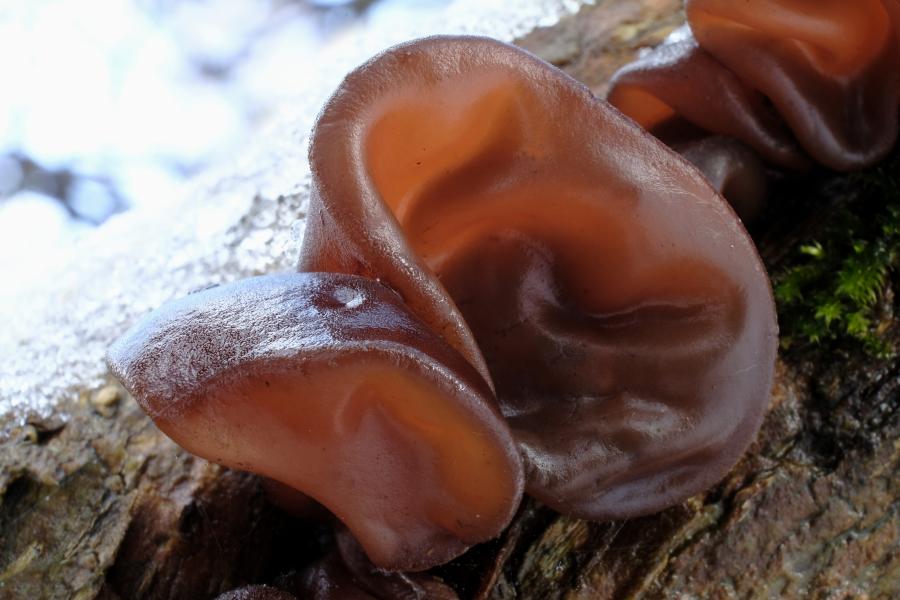
King Alfred's cakes looks just like lumps of coal and can be found on dead ash and beech branches all year round throughout the Forest. The story behind the name is that while King Alfred was taking refuge with a peasant woman to escape the Vikings she asked him to watch over her cakes baking by the fire, but he let them burn and ashamed of his negligence he scattered them outside. Incidentally, they make great fire-lighters!
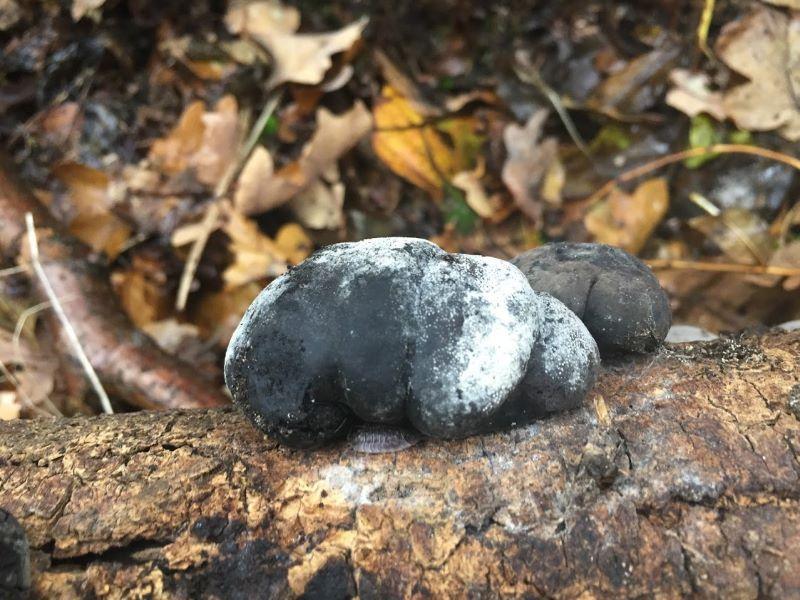
Porcelain fungus is specific to beech trees so look out for them growing on dead trunks and fallen branches between July and October. With its translucent, white caps, it is easy to see how this fungus got its name. It is a fierce competitor and will release its own fungicide to prevent any other fungi from getting a look-in.
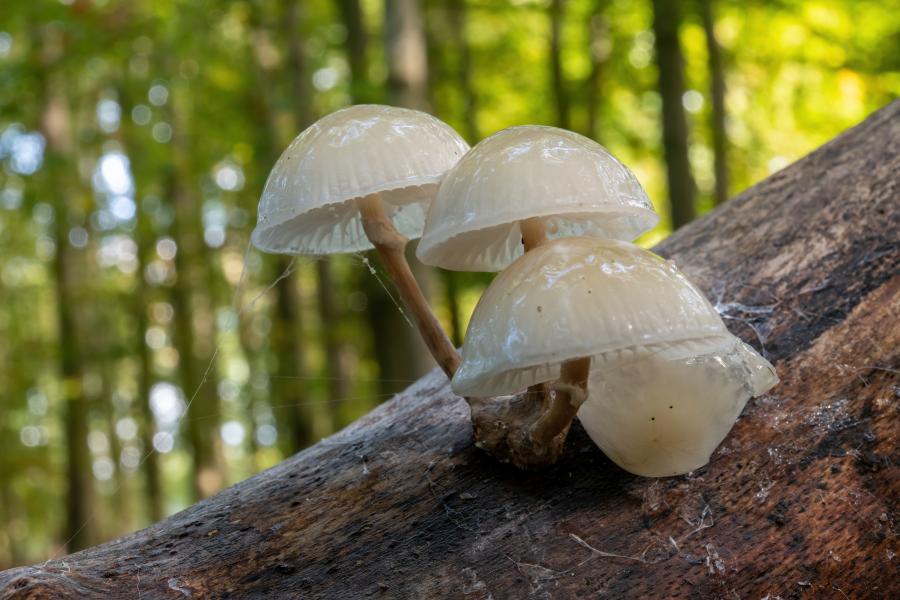
The common puffball is a species that grows on the ground in woodland from July to November. It starts of a white colour and becomes yellowish brown on its subglobose head and distinct stem. Most puffballs are edible when they are young and white inside so are a favourite amongst foragers.
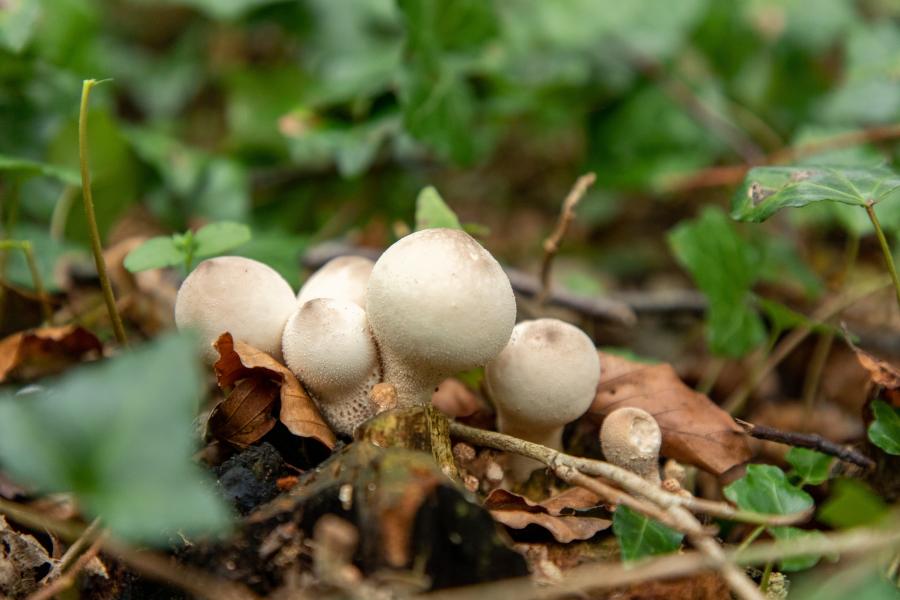
As the name suggests, the brown birch bolete can be seen growing in the grassy areas beneath birch trees between August and November. Their domed brown caps range from 5 – 15 cm wide and sit atop white stems covered in tiny black scales. These edible fungi are very variable and sometimes have caps of pure white.

Possibly the most widely recognised fungi we have growing in the forest, fly agaric is commonly associated with birch, pine or spruce woodlands - look out for it along the bridleway in Coughton Park between August and November. Its bright red caps are covered with white warts which can be washed off by the rain or knocked off by wildlife, leaving the cap almost smooth. It has a symbiotic (mutually beneficial) relationship with the trees, taking nutrients from their roots without detriment.
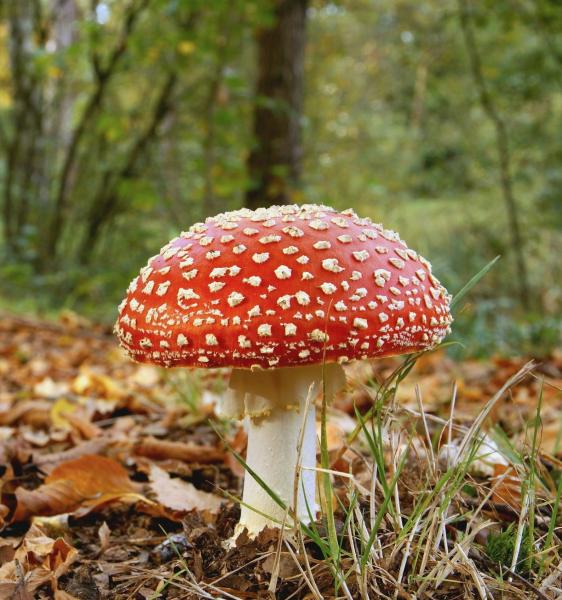
The poisonous sulphur tuft is easy to spot between August and November across all our woodlands due to its bright colour. Its domed caps become flatter with age and are a yellow colour with reddish-brown centres but it can be a difficult species to identify as its appearance can vary.
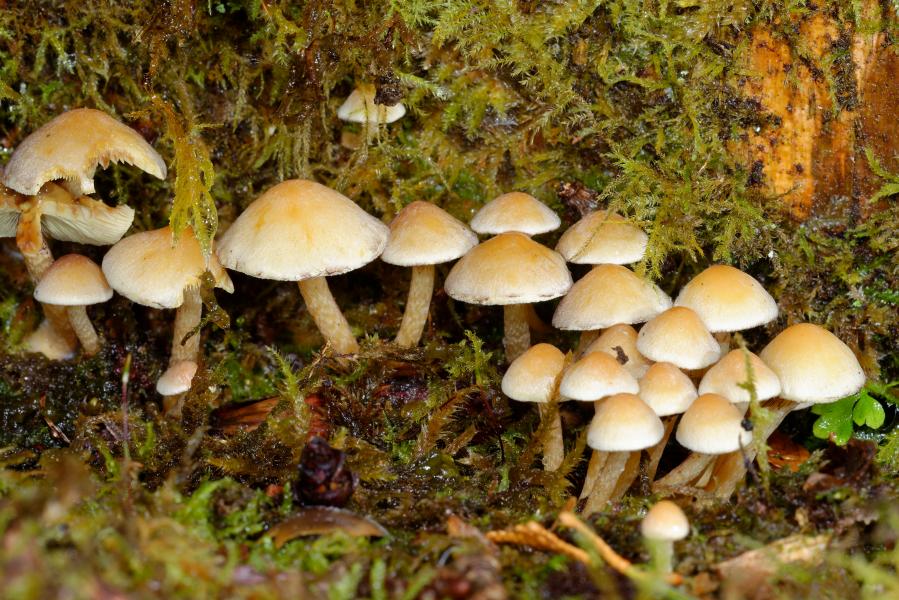
Look out for honey fungus on decaying wood across all our woodlands as the weather gets wetter in September. This fungus spreads underground by direct contact between the roots of infected and healthy plants, and also by means of black, root-like structures call rhizomorphs which can spread from infected roots through soil. The most telling sign that honey fungus is growing on a tree is white fungal growth between the bark and wood, usually at ground level.




